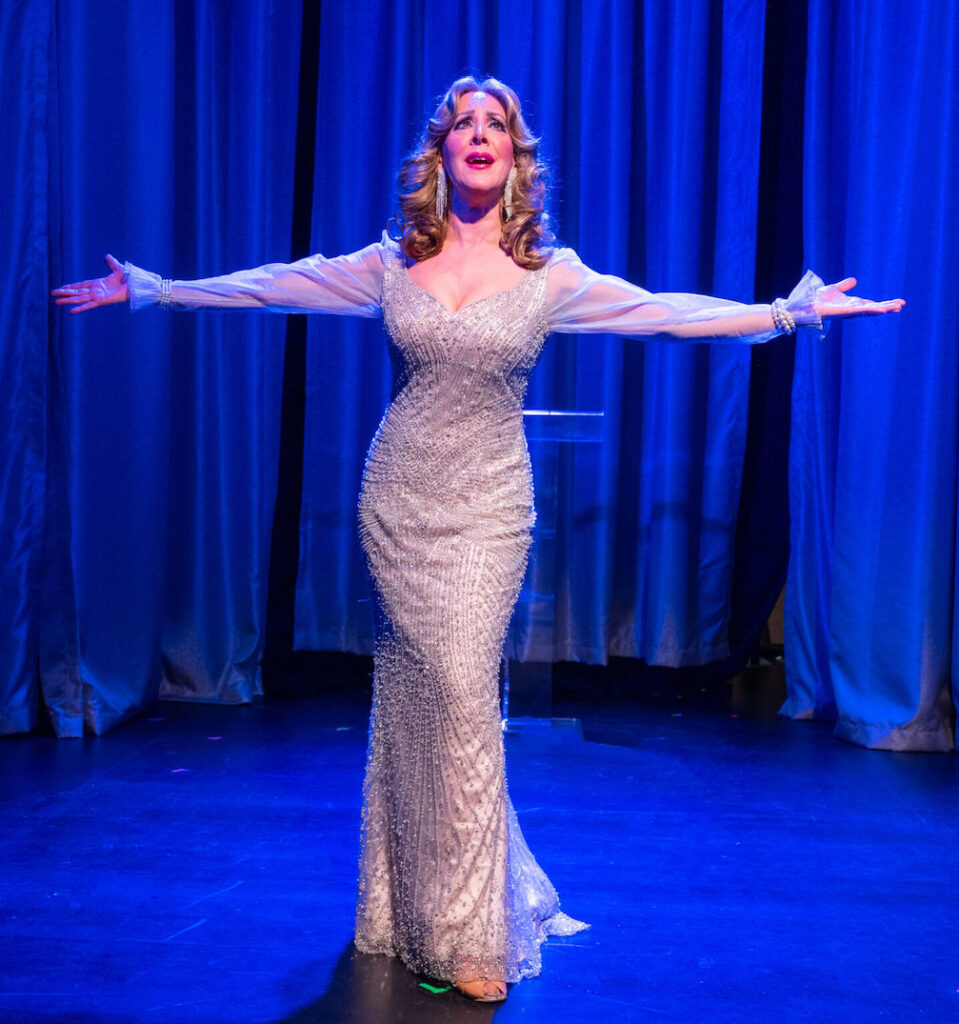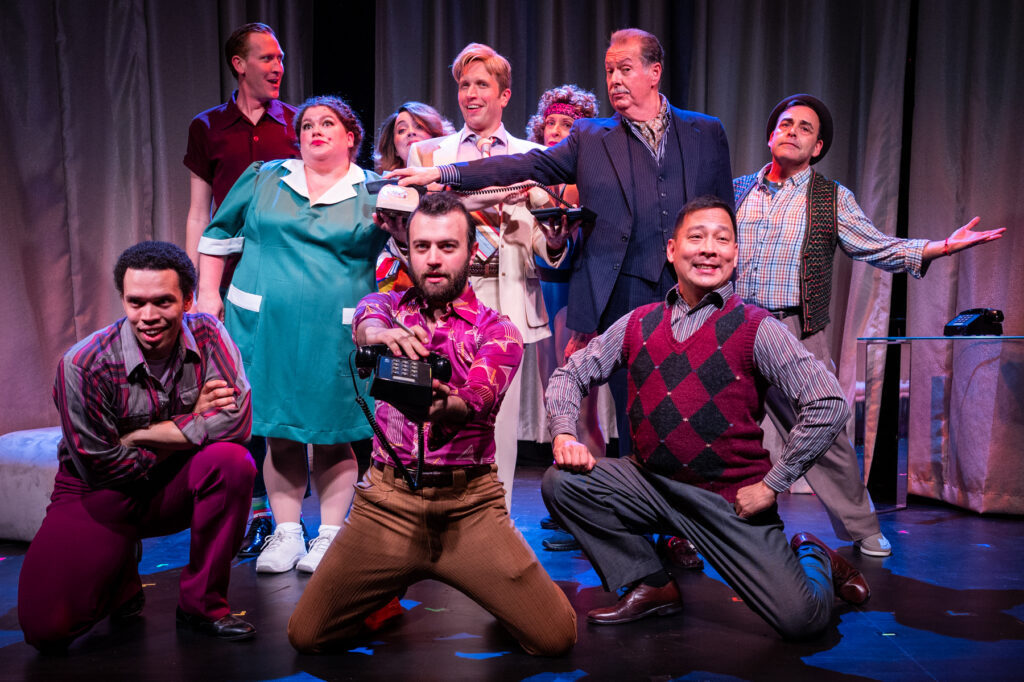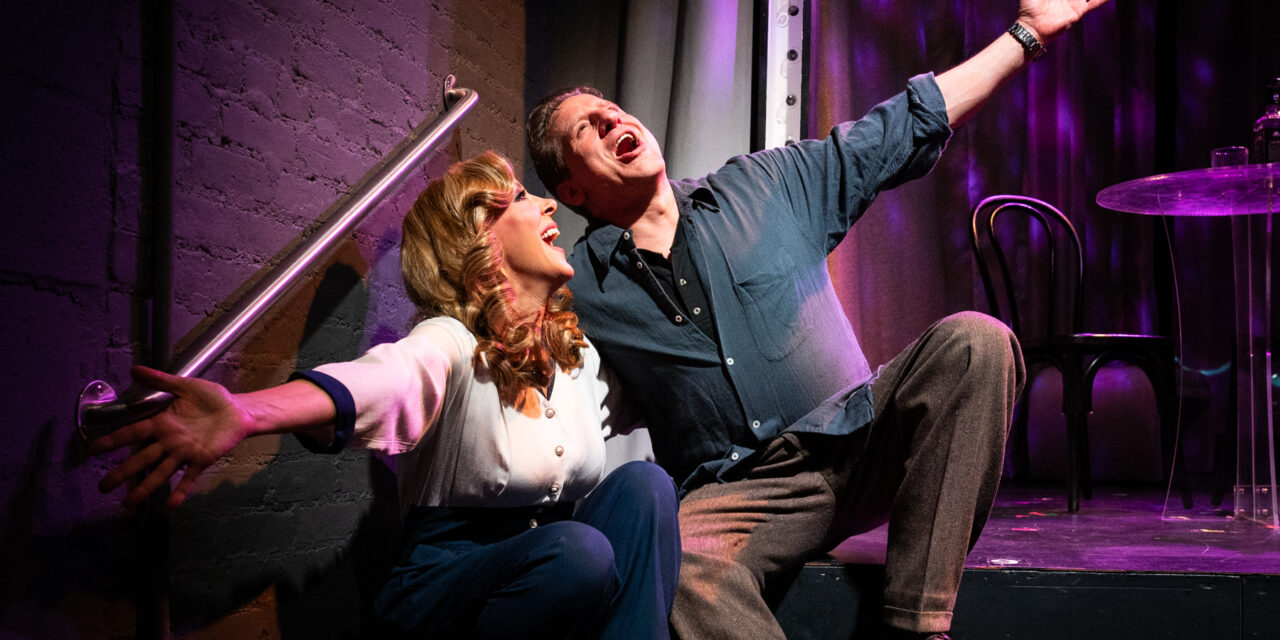By Ron Fassler . . .
Composer John Kander, at the age of ninety-six, will soon be represented on Broadway later this week when his newest musical New York, New York opens at the St. James Theatre. But back when he was a spry forty-four, he and lyric partner Fred Ebb wrote the score to Woman of the Year, a star vehicle for Lauren Bacall, which opened at the Palace Theatre in 1981. It was based on the 1942 MGM film of the same title, featuring Katharine Hepburn and a top-billed Spencer Tracy. Though it won the Academy Award for Best Original Screenplay, its real strength was the pairing of the immortal screen couple for the first of the nine feature films they made together. Watching them fall in love figuratively and literally is a joy that few movies capture in real-time. The heat between them is palpable, easy to spy in their “meet-cute” when Tracy enters an office to find Hepburn sitting on the edge of a desk, straightening her stocking. It positively sizzles.
The musical version of Woman of the Year isn’t really about a couple, even though it pretends to be. By featuring Bacall above the marquee and an “Also Starring Harry Guardino” below its title, anyone saddled with the role of Sam Craig is subservient to whoever is cast as Tess Harding by virtue of the imbalance written into it. That fundamental change, from screen to stage, is what doomed its musicalization from the beginning. A love story needs two at the core. Sam is underwritten and minimalized by Tess’s presence every step of the way. Even when she’s offstage, the character dominates. Adding to the problem are book writer Peter Stone’s plot contrivances, too basic in what they say about men and women conflicted between career ambition and domestic life. Not only was it pat and feeble then, but it’s entirely more so now. Bogged down with references that dated it even before it closed, two years after it opened in 1983, it’s a big reason why Woman of the Year has never been revived in New York. That is, until this production, courtesy of J2 Spotlight, a musical theater company whose worthwhile mission is to revive Golden Age Musicals that time may have passed by.

But, “Ay, there’s the rub!” Which ones are worthy of resuscitating? Prior productions in the company’s two previous seasons included Richard Rodgers and Samuel Taylor’s No Strings (1962); Cy Coleman and Dorothy Fields’s Seesaw (1973); and Stephen Schwartz and Joseph Stein’s The Baker’s Wife (1976); all worthy of second looks. Woman of the Year? Not so much. I’ve long suspected that Kander & Ebb and Stone would have agreed this was not among their best, in spite of taking home Tony Awards for their efforts (factually, it was a weak season for original musical scores with the three shows in competition running for a combined total of 84 performances). My personal experience seeing the original production was that it wasn’t until late in Woman of the Year’s second act when, for the briefest of moments, things came to life. It was a scene and duet in which Bacall and Marilyn Cooper, playing the dowdy second wife of Tess’s ex-husband, stopped the show. Their song “The Grass is Always Greener” was classic Kander and Ebb (witty with a bouncy tune) that inspired a much-deserved encore. I recall vividly turning to my companion that night and saying, “Now that’s the kind of song the entire show should have strived for.”
Sadly, that’s still the case. Yet with all that said, once again J2 Spotlight has risen to the occasion, giving its all. With minimal production values, director Robert W. Schneider manages to simplify and somehow give us a taste of what a big splashy version might have been like. Schneider’s good taste is evident in the casting of Janine LaManna, who is every bit larger than life (yet grounded in reality), to pull off a character like Tess Harding. She cuts a smashing figure and is costumed wonderfully by DW Withrow. She sings well and, to her credit, doesn’t push things. The same can be said for John Leone’s Sam Craig, who offers a nice voice and stage presence. Though the songs he’s saddled with are another story, Leone does the best he can with what’s given. Special credit to Eric Michael Gillett, always a welcome presence on stage, and who excelled in J2 Spotlight’s A Class Act last season. Jake Urban shines as a Russian ballet dancer in his solo, well danced and quite funny. A recent college graduate of Boston Conservatory at Berklee, Urban shows promise. And as for Kelly Lester, who was a highlight in JR’s Baker’s Wife last season, she brings the proper deadpan comedy and strong vocals to the role that won Marilyn Cooper a Tony. One scene and one song can sometimes be all that’s needed to take home the gold.


Speaking of gold, even if J2 Spotlight’s commitment to the Golden Age of Musicals may not have been best served by the less than 24 karat value of Woman of the Year, there are still other lost treasures to be mined coming up, such as Sugar, their next “commodity,” which begins performances later this week. A 1972 musicalization of Some Like it Hot, the 1959 Billy Wilder and I.A.L. Diamond gem of a screen comedy, it was the precursor to the new version that goes by the same title, and currently on Broadway. I, for one, am excited to see what sort of sprinkling of Sugar Robert W. Schneider and co-producer Jim Jimirro come up with on the pocket-sized stage at 42nd Street’s Theatre Row.
Woman of the Year ran April 13-23 at Theatre Row (410 West 42nd Street, between Ninth and Tenth Avenues); and Sugar runs from April 27 through May 7. Also check out the third and final presentation, The Goodbye Girl, starring Santino Fontana and Sierra Boggess, May 11-21. www.j2spotlightnyc.com
Photos: Russ Rowland


















